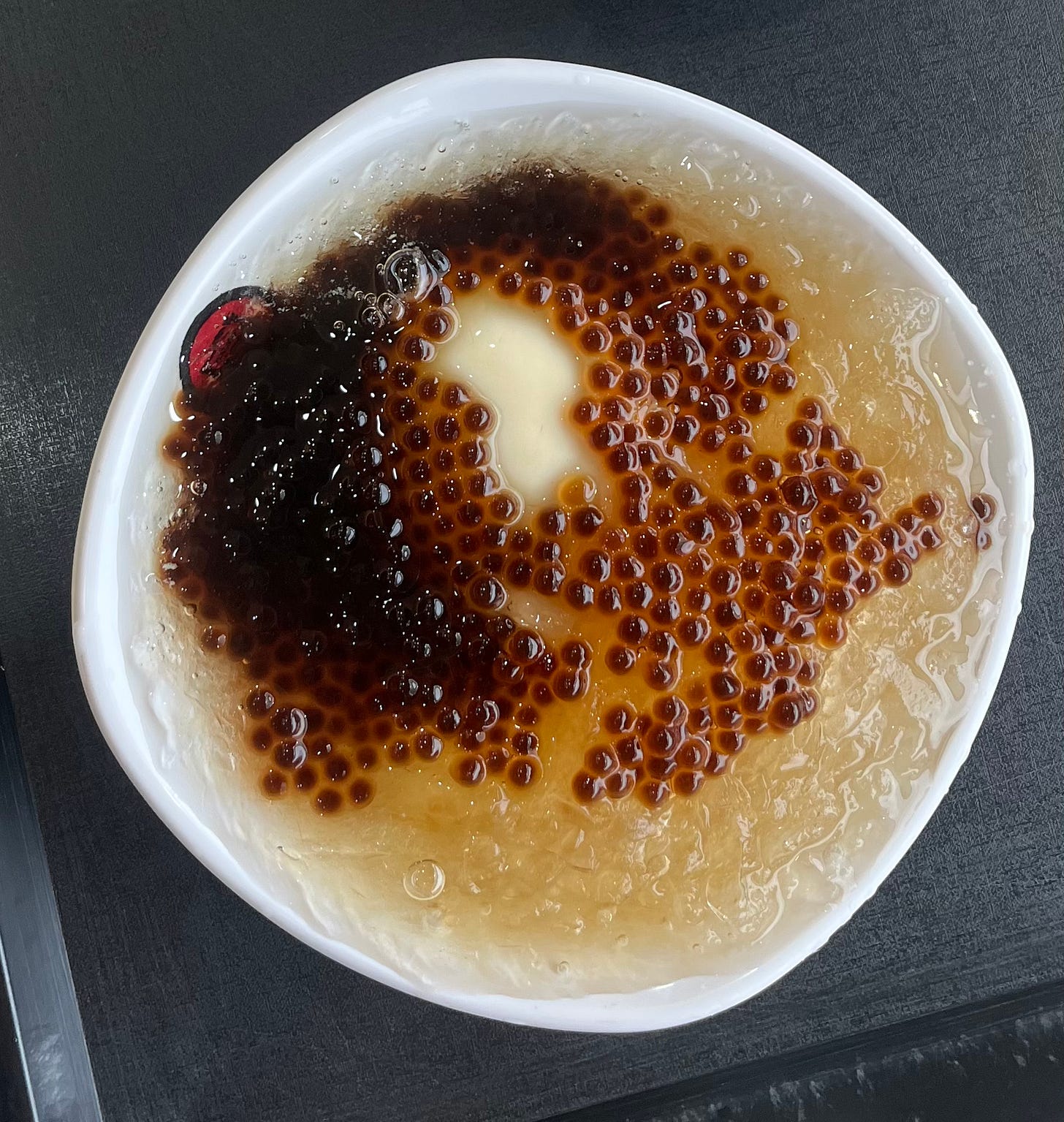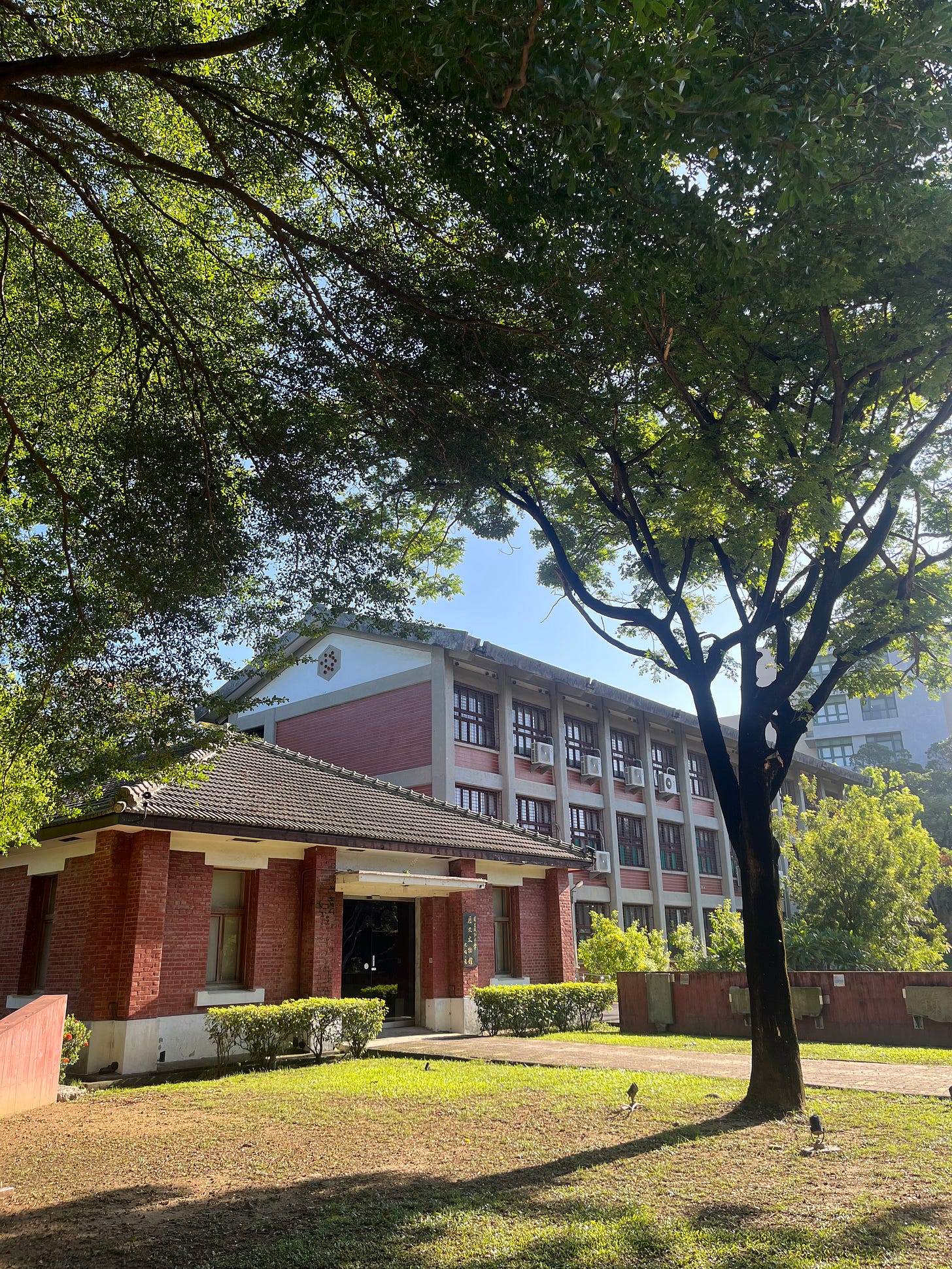Week 3: Bean jelly; joyless learning and AI
Sweet tofu, ice and tapioca at Anping Bean Jelly in Tainan
Jelly, ice and sugar in bowls
Nothing quite beats a bowl of sweet creamy beancurd floating on ice and squishy tapioca pearls on the side on a hot evening. I went to Anping Bean Jelly on a Friday afternoon to test the fabled sweet tofu, and found it delicious and refreshing, more textured than the soft almond soya beancurd I know from Hong Kong.
Grass Jelly from Hei Gong Hao in Tainan
Grass jelly is another new treat I have discovered in Tainan at Hei Gong Hao in Tainan - it’s a Taiwanese shop but they also have outlets in Japan. Black chunks of grass jelly - not sweet but not bitter either - topped with fresh milk and extras of your choice - mango, tapioca, red beans etc.
The importance of jelly
I wanted to love the grass jelly - it’s healthy (full of antioxidants), cooling, and not sweet - but found that I didn’t at first, it just tasted a bit off-key, as though I need more practice to truly appreciate it.
My family have said in the past that jelly is an acquired taste in general, something that people who’ve lived in Asia as children learn to love.
A book I came across called “Transparent dessert: the world’s most beautiful recipes”.
Why is jelly so much loved in Asia?
Apart from being a refreshing and hydrating dessert or snack during the long, hot, humid summers, jelly also scores high on aesthetics (transparent things are a canvas for artistry - such as the book cover above) and on texture (the chewy, bouncy “Q” texture which is an integral part of the boba tea magic)
Around the NCKU campus after the typhoon
How to fight joyless learning
At the end of week 3, my brain was a blur from taking in too much new stuff (idioms! grammar! exams in 2 weeks! daily homework!) and I decided to get a massage. “Why are your shoulders so tense from learning Chinese?” the massage therapist asked. “You need to relax and you will learn better!”
She was right. As novelty fades, routine sets in, and it’s too easy to default to joyless learning, that state where you’re trying to do everything at the fastest, most optimized pace which ensures that nothing will stick long-term in your brain.
Enter AI. It offers shortcuts to get to the destination faster. It cuts out some of the pain. But I’m pretty sure it fosters joyless learning which prioritizes speed over a slower, more immersive process.
My classes here at NCKU emphasize speaking and endless repetition of new grammar forms and vocabulary. Previously I had taken classes at INALCO in France and the method there emphasized reading. In the final year of the cycle there was an abrupt shift from high beginner/low intermediate to reading difficult (literary and contemporary texts). This sudden shift led me to use AI a lot, especially to prepare for exams, and in hindsight I get the sense that I learnt almost nothing during that time.
Moreover, relying heavily on AI to read difficult texts and generate written work at a higher level gave me a false impression of my level in Chinese, and the placement test for NCKU here in Tainan was a reality check.
No, you are not joining the class where they debate topics like freedom of speech and read newspaper articles. You are going to the class where they discuss why PhDs are selling fried chicken and whether feng-shui is nonsense or scientific.
AI removes the struggle which, in the moment, feels liberating, but which deprives us of the mastery which is key to the satisfaction and joy of learning a language.
In “The End of the Essay”, Hua Hsu reflects in the New Yorker on whether AI has destroyed college writing. He describes his teaching method:
“My classes are small & intimate, driven by processes and pedagogical modes, like letting awkward silences linger, that are difficult to scale.”
I thought of this quote as I reflected on the blur of the past three weeks. The teachers here bring tremendous energy to the classes, and everyone is given an equal chance to speak, fail, and try again. It is high-touch human-centric work.
In a way, the road to more joyful learning probably starts with being grateful for that energy.
Friday night near Hai’An Road in Tainan






Denise, your Substack is the best thing I’m reading these days (and I read a lot). I appreciate the introduction to this land language and culture that are so foreign to me but it might be your observations on how we learn to learn and enjoy that move me the most. So glad you are doing this!